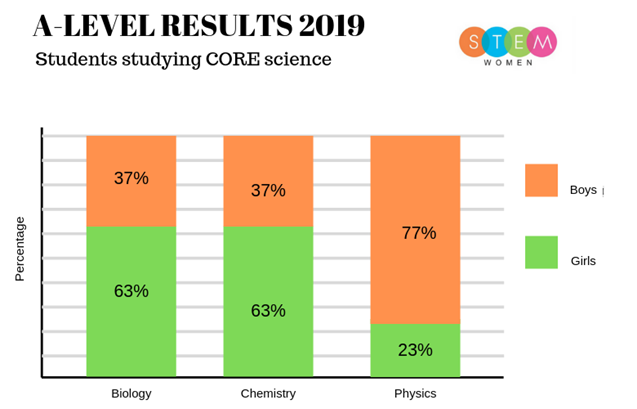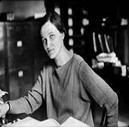
Looking back and tracing my memories and experiences from school seems ages ago now! I did not hate school, but it was never my favorite place to be. As an adult, now I can say that I was not the most engaged student in core subjects despite I had the best intentions. I would drift away in the science lessons, yet the same me would love English and other culturally-enriching subjects like art and drama.
Why so? I can’t clearly remember what happened exactly in my primary classrooms, but it was in the secondary school that the sciences became prominently burdensome to me. The sciences were divided into Biology, Physics, and Chemistry, and it was Biology, I felt, that I could most engage with. In this regard, I agree fully with research evidence that suggest that it is a common trait for girls to identify with Biology or Chemistry more than Physics.

Source: STEMWOMEN
But it could have been otherwise. It is only recently that my interest in Physics has surfaced; more so in Astronomy. Two years ago, I was watching a film based on a true story (Molly’s Game) and it was then that I learnt a curious piece of information that the center of the Milky Way smells like rum and tastes like raspberries. This got me into thinking – “really?” I got excited and delved deep. I wanted to know more.

Image: iStockphoto/Thinkstock
I then learnt of Sagittarius B2, the mega collection of swirling dust at the center of our galaxy, which is three million times bigger than the mass of the sun and due to the substance Ethyl Formate being present. It is this substance that creates the center of our galaxy to smell like rum and taste like raspberries. As well as discovering that astronomers estimate that there are 10,000 stars per grain of sand on Earth. I do not remember ever hearing of information like this in school that could blow my mind; that could grab my attention, excite and engage me enough to want to learn more. That ‘awe and wonder’ was missing in my science in school. That’s why, I think science lessons need to hold hands with drama or English – which is exactly what I see in the Epistemic Insight Initiatives at Canterbury Christ Church.
I also think I didn’t get to know enough about female scientists doing well when I was in school. I was an easy victim of the stereotype that Physics is not for women. I didn’t know about great influential women in Physics and their groundbreaking work and their journeys and perseverance in a ‘male’ domain. I attended a Girls’ School and from my recollection, I do not remember any influential female role models ever discussed in Physics!
We didn’t get know female role models, such as Cecilia Payne-Gaboschkin, who discovered that the Sun and other stars are mostly made from Hydrogen and Helium; Mae Jeminson an engineer, physician and a trained medical doctor who was the first African American woman astronaut to go into space in 1992.Ruby Payne-Scott, the first ever female radio astronomer; Vera Rubin who provided evidence for the existence of dark matter; Dame Jocelyn Bell who co-discovered the first radio pulsers which have been used to confirm the existence of gravitational radiation; Katherine Johnson, whose mathematical calculations made possible the first and subsequent manned U.S Space flights; Margaret Reid who carried out pioneering work in new fundamental tests of quantum theory which include teleportation and cryptography, as well as developing a test for Einstein’s theory of entanglement.
There are so many wonderful and amazing women in science! Their inspiring journeys and groundbreaking work can be celebrated more in schools and be presented as role models for girls to take active interest in Physics, Mathematics, Computer Science and Engineering.
Why aren’t we talking about these women more in schools? As a science project that works with schools, the Epistemic Insight Initiative is in a great position to step in and fill in this void.



